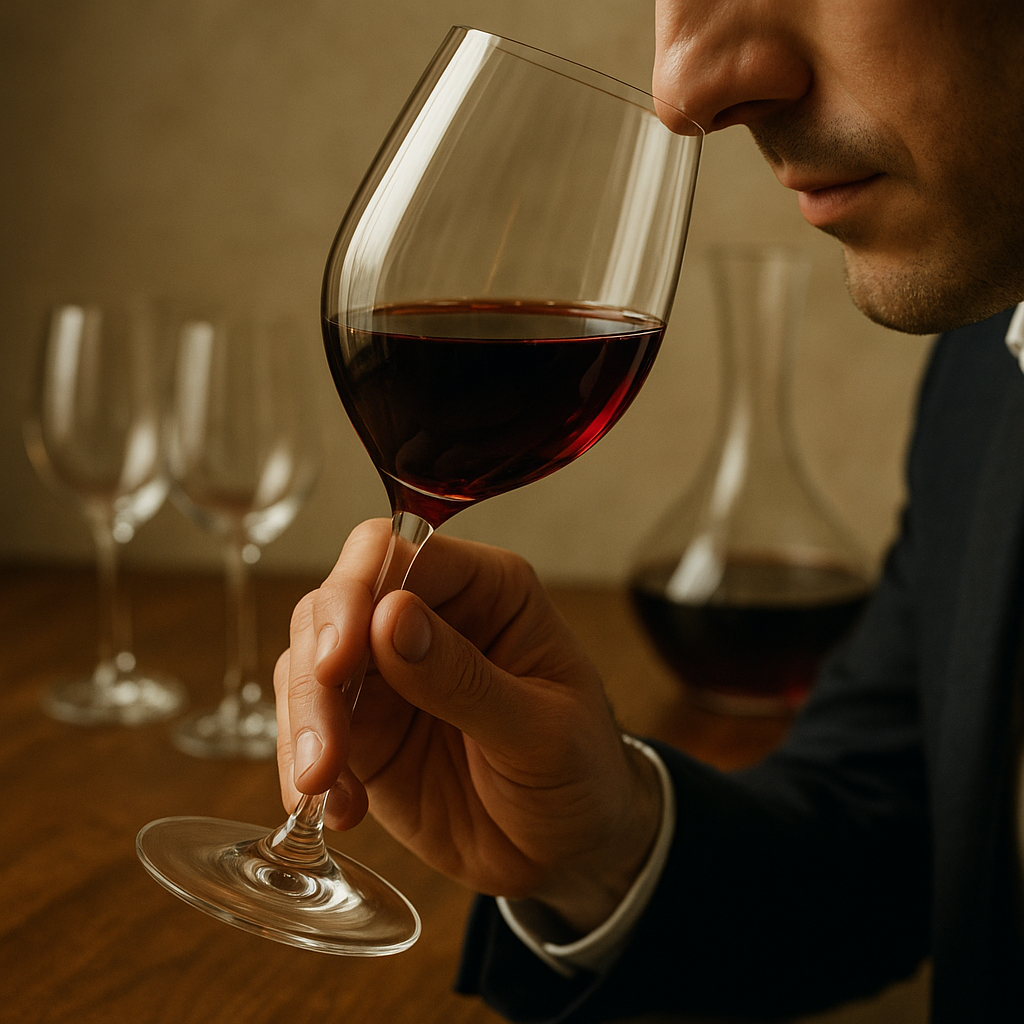
Proper glass handling enhances wine aroma.
Share
The Science Behind Wine Aromas
The complexity of wine aromas begins at the molecular level, where volatile compounds interact with our senses. When wine is poured into a glass, it releases these compounds into the air, creating a bouquet that can transform a simple sip into an immersive experience. The shape of the glass plays a crucial role in this process; a wider bowl allows for greater surface area, facilitating the evaporation of these aromatic compounds. This is why a Cabernet Sauvignon, with its rich notes of dark fruits and spices, is often served in a glass designed to enhance its robust profile.
Moreover, the temperature at which wine is served can significantly influence its aroma. A chilled white wine may present crisp citrus notes, while a slightly warmer red can unveil deeper, more complex layers. Proper glass handling, including swirling, further aerates the wine, encouraging the release of even more aromas. This delicate interplay of glass design, temperature, and movement not only enhances the olfactory experience but also deepens our appreciation of the intricate flavors that define each wine.
The Impact of Glass Shape and Material on Aroma
The shape and material of a wine glass significantly influence the aroma, allowing the unique characteristics of each wine to unfold. A glass with a wider bowl encourages the wine to breathe, promoting the release of volatile compounds that contribute to its bouquet. This is particularly beneficial for full-bodied reds, where oxygen interaction enhances the depth of flavor. Conversely, a narrower glass can concentrate the aromas, making it ideal for lighter whites and delicate rosés, as it directs the scent toward the nose, amplifying the sensory experience.
Furthermore, the material of the glass plays a critical role. Crystal glasses, known for their clarity and resonance, can elevate the perception of aroma due to their ability to enhance light refraction. This subtle interplay of light and scent can lead to a more immersive tasting experience. On the other hand, thicker glass can mute aromas, potentially diminishing the enjoyment of a fine wine. Therefore, selecting the appropriate glass not only enhances the visual appeal but also enriches the aromatic journey, ensuring that each sip is a celebration of the wine's true essence.
Techniques for Proper Glass Handling and Serving
To fully appreciate the nuances of wine, proper glass handling and serving techniques are essential. Begin by selecting the right glass; a tulip-shaped wine glass is ideal for enhancing aromas, as its narrower opening concentrates the scents. Always hold the glass by the stem, avoiding contact with the bowl to prevent warming the wine with your hand. This practice not only maintains the optimal temperature but also keeps fingerprints off the glass, allowing for a clearer view of the wine's color and clarity.
When pouring, aim to fill the glass to about one-third full. This allows for adequate space for swirling, which releases the wine’s aromas. A gentle swirl can further enhance the aromatic profile, inviting a more profound sensory experience. Additionally, consider the angle of the pour; tilting the glass slightly can minimize splashing and aerate the wine effectively. By mastering these techniques, you not only elevate your wine experience but also show respect for the craftsmanship behind each bottle.
